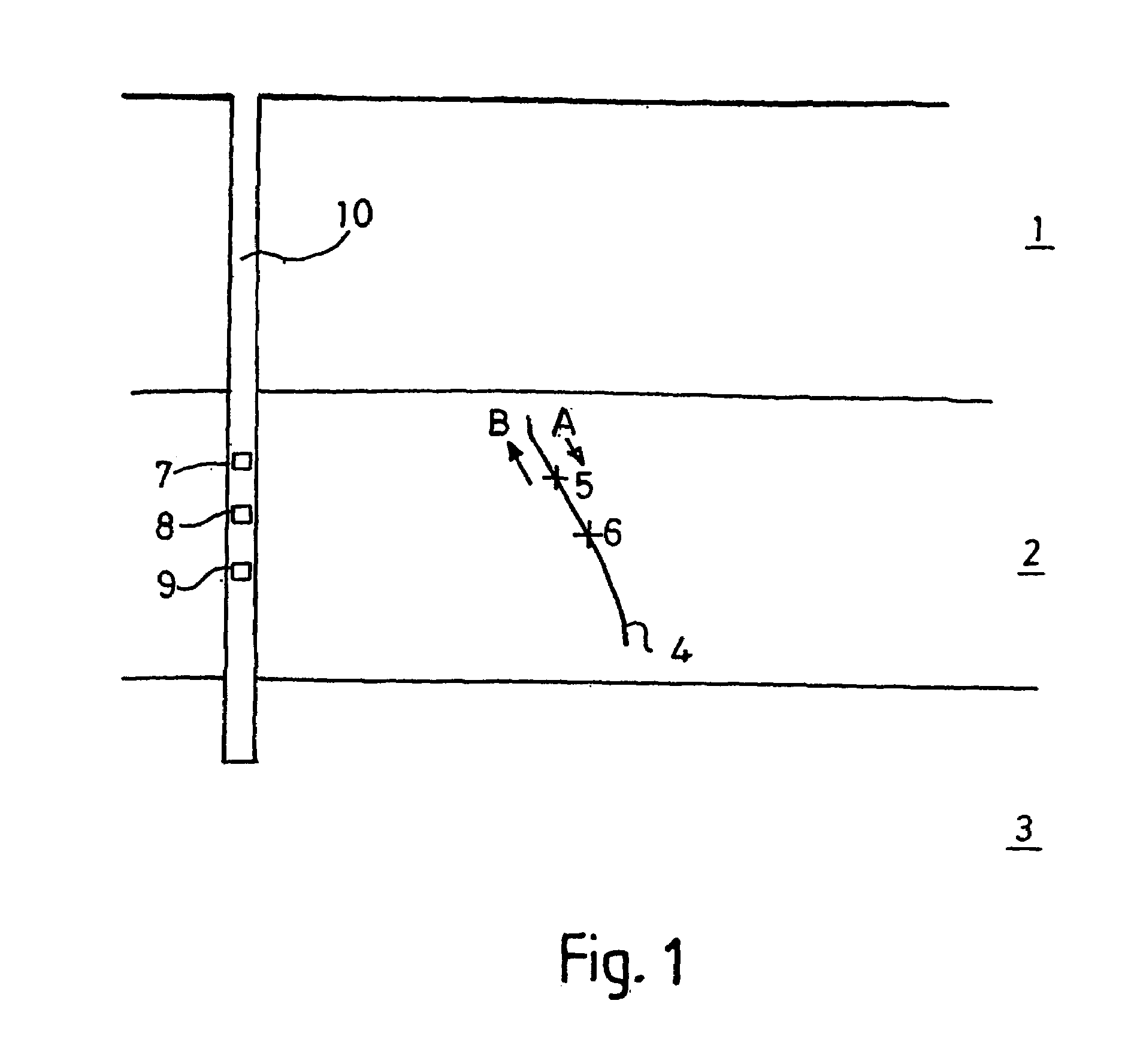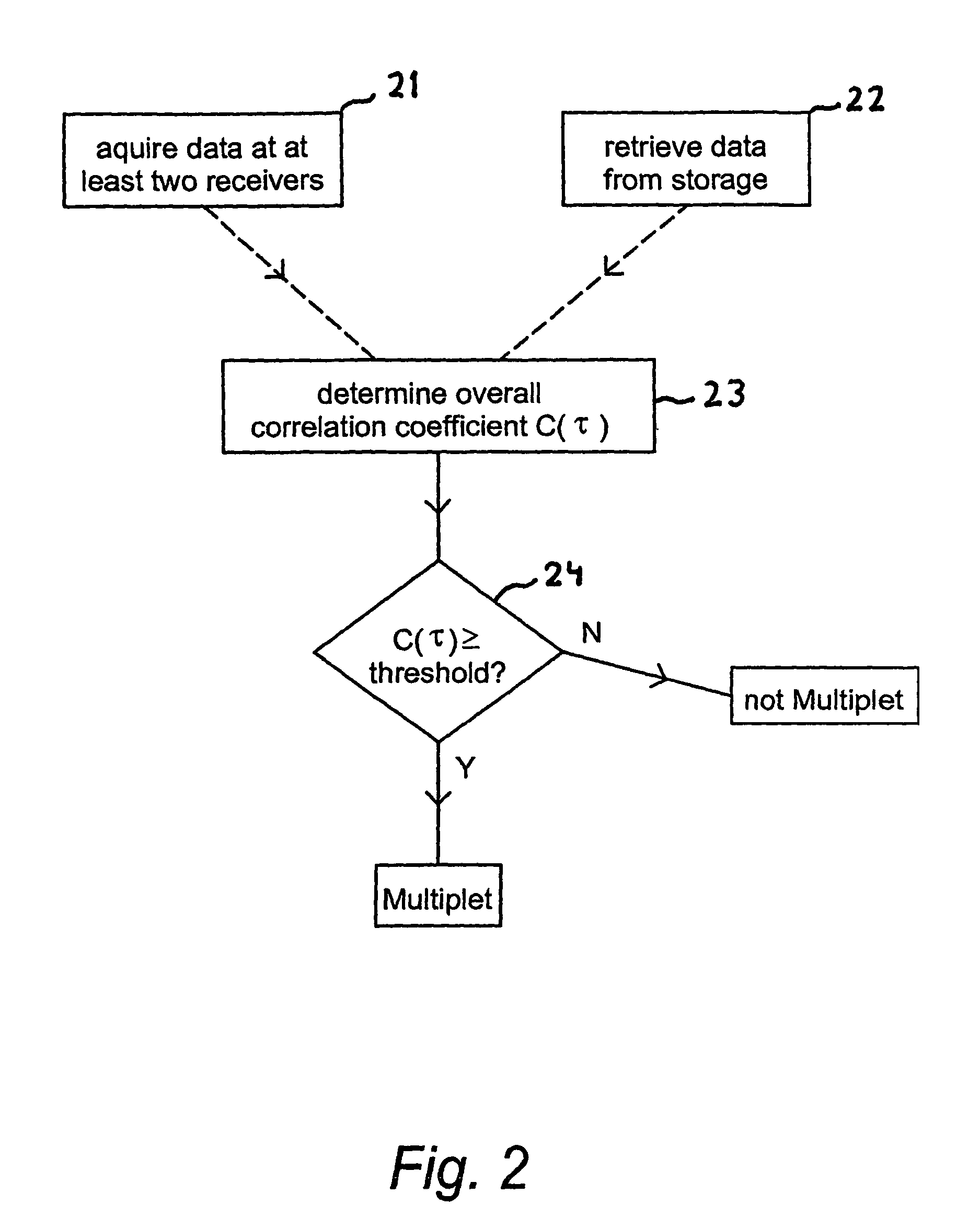Passive seismic event detection
a seismic event and passive technology, applied in the field of processing seismic data, can solve the problems of inability to manually identify doublets and lack of available methods for identifying doublets, and achieve the effects of low weight in step, accurate identification of doublets, and high correlation coefficien
- Summary
- Abstract
- Description
- Claims
- Application Information
AI Technical Summary
Benefits of technology
Problems solved by technology
Method used
Image
Examples
Embodiment Construction
[0038]A preferred embodiment of the invention will be described in which the overall measure of similarity is an overall correlation coefficient. However, the invention is not limited to use of an overall correlation coefficient as the overall measure of similarity and, in principle any quantity which gives a measure of the similarity between two waveforms may be used.
[0039]This embodiment of the invention is based on waveform correlation. The cross-correlation coefficient cxy between a first waveform x(t) and a second waveform y(t) is a dimensionless quantity that gives a measure of the similarity between the waveform x(t) and the waveform y(t). The cross-correlation coefficient is defined as:
[0040]cxy(τ)=∫-∞∞x(t)y(t+τ)ⅆt∫-∞∞x2(t)ⅆt∫-∞∞y2(t)ⅆt(1)
[0041]In equation (1), x(t) is the time series denoting the first waveform, and y(t) is the time series denoting the second waveform. y(t+τ) denotes the time series for the second waveform shifted by a delay time τ.
[0042]The cr...
PUM
 Login to View More
Login to View More Abstract
Description
Claims
Application Information
 Login to View More
Login to View More - R&D
- Intellectual Property
- Life Sciences
- Materials
- Tech Scout
- Unparalleled Data Quality
- Higher Quality Content
- 60% Fewer Hallucinations
Browse by: Latest US Patents, China's latest patents, Technical Efficacy Thesaurus, Application Domain, Technology Topic, Popular Technical Reports.
© 2025 PatSnap. All rights reserved.Legal|Privacy policy|Modern Slavery Act Transparency Statement|Sitemap|About US| Contact US: help@patsnap.com



